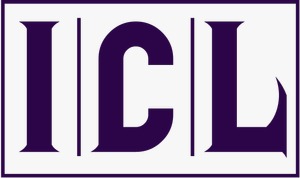The Impact of English Code Mixing on Viewers Confidence in Pakistani Ads
Keywords:
Code mixing, advertisement, viewers confideAbstract
Code mixing in the present research study is an aspect on how viewers' confidence may be affected. But when it comes to young Pakistanis, ages between 18 to 35 means they are the demographic group that takes the lead into adverts. A multicultural society, like Pakistan, code-mixes (mixes the use of English and Urdu). This can be found in its normal everyday communication. Although the existing body of knowledge is relevant to the subject, it nevertheless contains a hole which this research intends to fill by analyzing the psychological effects of code mixing in advertising among the youth. The aims of research are identifying the emotional responses, cognitive processing, and the degree of confidence of the young people involved in the multi codes ads as well as ads entirely in other languages. The design of research used here is descriptive type and the participants (N=80) have been acquired through convenience sampling in central location where they filled structured questionnaire. What these data tell us is that, in general, people have a high level of comfort with code-mixed ads that they can comprehend, and they have positive association with the language that they understand and find attractive. However, the outcomes are diverse as they depend on the different belief levels of the educational level and of the career stage. The study following presents certain marketing approaches which should be considered, including cultural product adaptation as well as the possible education programs. Both advantages and downfalls that the project consists of are described. Besides that, it should be mentioned that proposals as far as additional analysis is suggested, and possible directions are provided.
Downloads
References
Auer, P. (Ed.). (1998). Code-switching in conversation: Language, interaction and identity. Routledge.
Azim, M. U., Bhatti, A. M., Hussain, Z., & Iqbal, M. (2018). Culturally oriented textbooks and English Language Teachers. Hamdard Islamicus, 41(4), 301-317.
Black, R. (2011). Patterns and trends in quantitative studies. Research Methods in the Modern World.
Brown, A. (2012). Quantitative research in sociolinguistic methodologies. Language Press. Creswell, J. W. (2014). Research design: Qualitative, quantitative, and mixed methods approaches. SAGE Publications.
Fink, A. (2017). How to conduct surveys: A step-by-step guide. SAGE Publications. Grosjean, F. (2010). Bilingual: Life and reality. Harvard University Press.
Johanes, J. (2017). The influence of code-switching and code-mixing on learning English language in secondary schools: The case of Rombo district. Master's thesis, Open University of Tanzania. Johnson, L. (2018). Empirical observations in positivist research. Academic Publishing.
Kachru. (1986. 8 April 2012). Code-mixing, style repertoire and language variation: English in Hindu Poetic creativity. World Englishes. Retrieved from: http://www.edu.utas.edu.au/users/tle/ JOURNAL /issues/2008/24-2pdf
Language in India, 12(11), 429-430. Retrieved from http://www.languageinindia.com
Mandasari, I. K. (2022). Students' perception of code mixing used in Suhay Salim YouTube videos towards students' confidence in speaking English. Prosiding Konferensi Ilmiah Pendidikan, 3(2022), 715. e-ISSN: 2963-3222.
Milroy, L., & Muysken, P. (1995). One speaker, two languages: Cross-disciplinary perspectives on code-switching. Cambridge University Press.
Mushtaq, H., & Zahra, T. (2012). An Analysis of Code-Mixing in Television Commercials.
Myers-Scotton, C. (1993). Social Motivations for Code switching: Evidence from Africa. Oxford University Press.
Smith, T. (2010). Understanding reality: A positivist perspective. University Press. Thompson, S. K. (2009). Sampling (3rd ed.). John Wiley & Sons.
Wahyuni, S., Aeni, N., & Hasriani, G. (2023). Teachers’ Perceptions about the Use of Code- Mixing in Teaching English. Journal of Excellence in English Language Education, 2(2), 142.
Downloads
Published
How to Cite
Issue
Section
License

This work is licensed under a Creative Commons Attribution-NonCommercial-NoDerivatives 4.0 International License.


